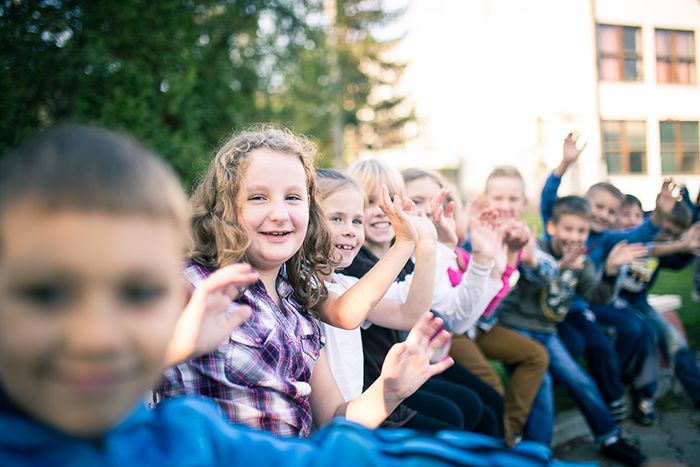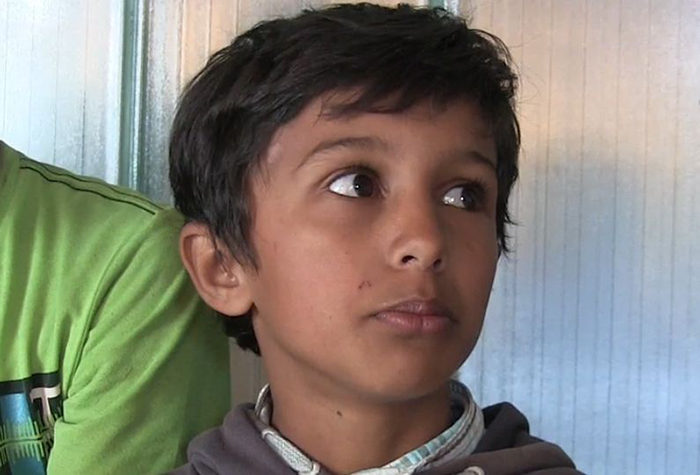 North West Balkans
North West Balkans
Languages
Zorica and Koja from a Romanian village near Srebrenik are their school’s pride

When he grows up he wants to be a policeman. He is aware that the path to attain this goal is very difficult and that he needs to study a lot. But studying is not the only problem that a ten-year-old Koja is faced with. His village is high up on the hill, twelve kilometres away from the school of which he needs to walk five kilometres down a steep hill-side in order to get to the bus. It is not a problem in summer but it not pleasant at all to walk in the snow, rain or dark in winter to come back come from the second shift in school. When he is not in school, Koja needs to help his mom carry water as the village of Ravnuše is not connected to the water supply system. Also, school is not always easy – he needs to overcome the language barrier since his native language is Romanian.
Koja is one of twenty or so students from the “Second Primary School in Srebrenik” that belongs to the Romanian minority. Owing to the efforts of the school management, notably the Principal Junuz Mulahmetović and the school counsellor Mirza Jahić and with the support of the Save the Children organization working in cooperation with the Ministry of Education, Culture and Sport of Tuzla Canton and the Institute of Pedagogy, these children are encouraged and supported to attend school regularly.

The school implements a pilot project that enables children from socially disadvantaged and vulnerable families that do not attend school to complete one grade in two years following a shortened curriculum so that they can catch up with their peers and be included in a regular schooling system. Currently, from the students that have previously concluded the shortened program in the Second Primary School in Srebrenik, three of them have been included in the regular program in grade five, seven in grade seven and three in grade nine.
Regular education will enable these children easier integration into the society and in long-term provide their families with prosperity and minimize the chances for these young people to start begging which is not a rare case among the middle-aged generation of inhabitants in village Ravnuše.
Among these children there is Zorica, a girl who tells us that in her class she has got so many friends that keep her company every day. When she grows up she wants to be a hairdresser but until then she does not find it difficult to get up early each morning to head to school.

The biggest problem that these children are faced with is the absence of organized transportation since it is a long way to school and a part of it extends through uninhibited area. In this situation, the humanity of teacher Dževad Ferhatović comes to light as he often takes the younger children their home by his car. The favourite teacher says that for him as an educator, the most important thing is that the children attend school regularly and that by doing this he also establishes cooperation with their parents which is crucial for achieving the long-term goal – successful completion of primary school.
The school Principal Junuz Mulahmetović brings good news and tells us that the school will very soon, even before winter, be able to organize a minibus to the children’s village.
“Until now, we have had seven students who have completed their primary education in this way. The pilot project students are mostly members of the Romanian national minority from the village of Ravnuše where children previously did not attend school. However, owing to the employees and the management of the school as well as great sensitivity of Srebrenik Municipal Mayor, at the moment all the children from this village of adequate age are included in the school process,” says the Principal.
The importance of inclusion as an in-depth concept
Among the satisfied parents is Fatima, a member of the Roma minority and a mother of five that lives in the neighbouring village of Tinj. Nevertheless, she has decided to enrol her children in Primary School Srebrenik because she feels that they are welcome there and the school has provided them books, transportation and school lunch. Talking with Fatima we come to know that her children have fit in well into the community, that they have never had any problems of being accepted by other children and that only in education they see the future for their family.
These examples testify to the importance of inclusion in the education process. This is an in-depth concept that includes participation of all children and youth in education and change in attitude of the wider community towards the term “equal right to education.”
Save the Children organization has implemented a two-year project „Inkluzivne škole u inkluzivnim zajednicama“, (Inclusive Schools in Inclusive Communities) in the “Second Primary School in Srebrenik” in cooperation with the Ministry of Education, Culture and Sport of Tuzla Canton and the Institute of Pedagogy. All 85 schools in the Canton applied the “Index for Inclusion” method.
The „Indeks inkluzivnosti“ (Index for Inclusion) methodology was developed in 2000 by British educators Tony Booth and Mel Ainscow with the aim of reducing challenges in education and fostering participation of the whole community in the education process in line with the inclusion values and cooperation among educational institutions, teaching staff, parents/guardians, students and municipalities. The schools included in the project were able to do a self-evaluation that was used to set up priorities and develop their own projects.
School yard is the place where the education process begins
Alongside the mentioned pilot project of conducting lessons in line with a shortened curriculum for students that were not included in education, “Second Primary School in Srebrenik” stated that one of their priorities is organizing the schoolyard. They believe that the whole school area should be of pedagogical importance and that this exactly where the image of their school starts.
Organizing the schoolyard meant putting up a high fence next to the stream thus contributing to the students’ safety. The flowerbeds were arranged, a mower was provided for regular mowing of the grass area, the car park was moved to another location to provide for gaming and recreation area. Wooden benches were also mounted for students to take a rest between lessons and even to study in fresh air together while bins for waste separation were placed in the schoolyard.
The school counsellor Mirza Jahić stresses that importance of cooperating throughout the project with the parents and the wider local community and that it is evident that the youth have had a positive effect on the awareness of the adults. Using the Index of Inclusion methodology and giving importance to everyone’s participation greatly contributed to the development of inclusive education. A very positive image of the “Second Primary School in Srebrenik” was created thus increasing in long-term the parents’ interest to enrol their children in this school and promoting education and knowledge as a precondition for a better future of the entire local community.
Because the children deserve this!